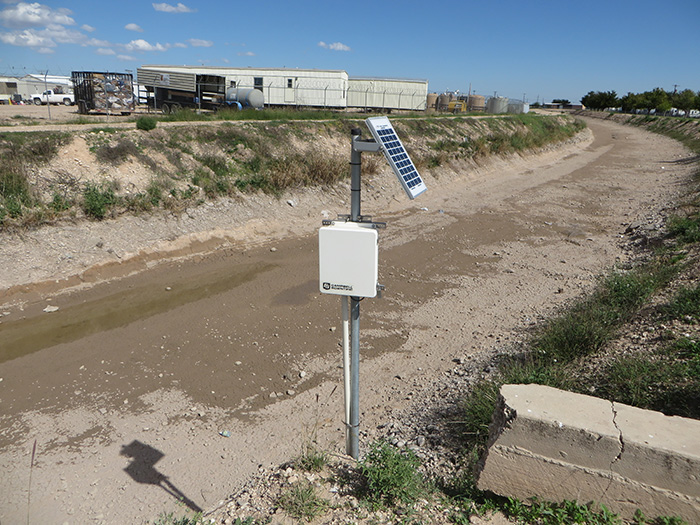




水資源コンサルティングおよびサービス会社である RESPEC は現在、ニューメキシコ州カールスバッドにある旧 I&W 施設の下にある塩水洞窟の早期警報システムの運用と保守の契約を結んでいます。この塩水洞窟は、地表から 450 フィート下にある塩層であるサラドの溶液採掘によって形成されました。
塩水は、ドリルビットの周囲と上部の溶解を防ぐために塩を掘削する際によく使用され、塩層に真水を注入して溶解を促し、その後塩水を汲み出すことで採掘されます。このプロセスによって地下の洞窟が形成され、規制当局は、2008年にニューメキシコ州で崩壊した他の2つの洞窟に似ている可能性があると結論付けました。
カールスバッド塩水洞窟は、崩壊の危機に瀕していると考えられており、隣接する住宅地、米国の主要幹線道路 2 本、農場および牧場の店舗、教会、および南側の大規模農業コミュニティを支えるカールスバッド灌漑地区の運河に直接影響を及ぼす可能性があります。また、崩壊により塩水が上部の帯水層に流れ込み、地元の地下水が塩分で汚染される可能性もあります。
2009 年 4 月以来、RESPEC は地表沈下監視と早期警報システムの提供を任されています。RESPEC は当初、近くの監視井戸に 4 台の Lily 掘削孔傾斜計、圧力センサー (洞窟に接続する坑口)、バイブレーティングワイヤ圧力計を設置しました。
最近では、RESPEC は灌漑用水路に水位ピエゾメーター (太陽光発電と RF401 無線通信を使用)、降水量計、109SS 地中温度センサー 2 台、107 気温センサー 1 台、および気圧計を設置しました。
このシステムは、地元の電力網から電力を供給され、UPS でバックアップされた Campbell Scientific データロガーを使用して継続的に運用されます。データは、オフサイトの Web アクセス可能なサーバーにリアルタイムでストリーミングされます。アラームしきい値は、傾斜、坑口圧力、浅い帯水層の水位に対して設定されています。アラームはデータ ストリームに対しても設定されており、データがアップロードされるまでに過度に時間が経過するとトリガーされます。アラームはテキスト メッセージと電子メールで発信され、マルチレベル方式で構成できます。低レベルの黄色のアラームはプロジェクト エンジニアにのみ発信され、高レベルの赤色のアラームは、データ値が設定されたしきい値を超えると、地元の緊急対応チームとプロジェクト エンジニアに直ちに通知されます。